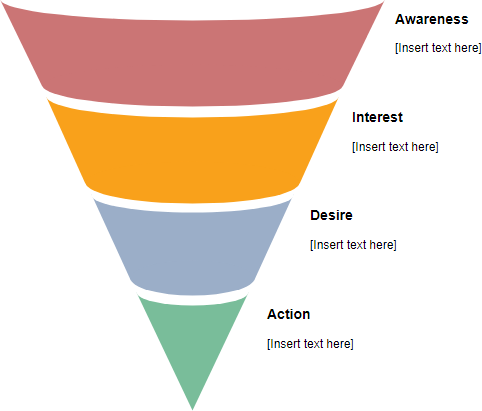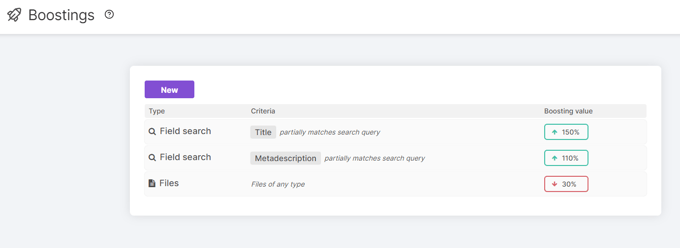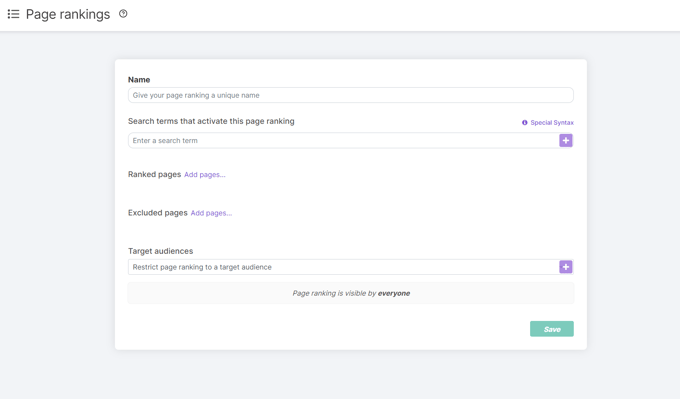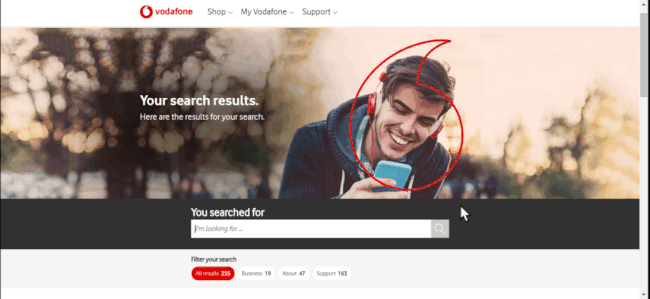Whether you're an Ecommerce site selling furniture, or a council website trying to guide visitors towards the right information, you want your site to be able to serve a purpose and to guide your users towards an end goal.
Ideally, you are creating pathways on your site with the intention of leading your users to their desired goal. This is what we call the basic marketing funnel. What the funnel is, is a representation of your visitors’ journey through your site, visualizing how they convert into customers, or sign-ups or whatever you want them to get out of their on-site experience. Like most aspects of the user journey, site search plays a crucial, yet overlooked role in the funnel.
Marketing Funnel – The Basics
First, let's clarify what a marketing funnel is to some. There are many forms and visuals of the marketing funnel out there but the most basic one involves four general factors: awareness, interest, desire and action.
 Source: Visual Paradigm Online
Source: Visual Paradigm Online
Awareness, as the name implies, is the point in which a visitor becomes aware of your product. From this awareness, you can build interest so they remain attentive to what you have to offer. Then you tackle on feeding their desires for your product. Finally, all this should accumulate into an action, where they end up purchasing. This is a just a simple example of a marketing funnel with some very broad goals at each stage.
Some funnels have more stages in the pathway. The top of the funnel is where your visitors enter the picture. Here is where most people gather but as we go down the funnel, that number thins out to the very few that eventually convert, or make a purchase. Hence the name ‘funnel’.
Bad Site Search = Leaky Funnel
While the funnel is there to push people to convert, there is evidence to show that some people don’t need as much of a push than others. These are the people who search, and searchers are more likely to convert than other users that merely browse. In fact, searchers have been reported to have 43% higher conversion, contributing to around 13% of a site’s total revenue! The reason for this is those who search have a stronger intent towards an end goal, which more often leads to conversion.
All searchers aren’t definite converters though; they travel through the marketing funnel with a chance of dropping off at any point. Think about your site and all that you do to keep people engaged, interested and exploring. You can design your site to gently nudge the user towards the end goal of conversions by using banners on your homepage, highlighting links for them to take the next step, or creating landing pages.
The search engine however, is like a layer of uncertainty in that equation. If the visitor decides that they want to know something more specific about your product and turn to the search, that is where you could lose a lot of well-engaged visitors. In the search results, you no longer have control over what they see; your search just pulls up the relevant links based on the keyword which might be more than you anticipated and less relevant than you want. These can cause your well-structured funnel to crack and leak.
Plugging the Cracks with Search
Thanks to search engines like Google, most people tend to assume that the first few search results at the top of the list are both the most recent and the most relevant. However, if your site search has been neglected for some time and not optimized, the opposite could occur. Let’s say you are a council site and are launching a recycling campaign, but your website has hundreds of pages, articles and documents related to recycling too. How site search engines work is that search results are ranked based on a score, with the highest being shown first in the results. These scores are obtained via the number of times a specific keyword– in our case here, ‘recycling’– appears on the page. The higher the keyword count, the higher the page rank.
So, if there is an article from two years ago with an excessive use of the word ‘recycling’, that will be one of the first things that your visitors see. Even worse, they might select and open that link with the assumption that it is related to your campaign. Not only will they be led astray, but they will be forced to put in more effort to search for a more relevant page (on a site whose search has already proved itself to be a little unreliable). Most visitors lack the patience to do this. Usually we leave once we land on something irrelevant, taking the whole search process as precious time lost. Not only have you lost a potential customer, you may have also tarnished your reputability through your websites lack of usability!
Time to patch it up by optimizing your search results page. The best way to go with this is to make sure that the most relevant pages top the search results. Boost links to the recycling campaign and other relevant pages related to it.
 Cludo’s Boosting tool in the MyCludo dashboard
Cludo’s Boosting tool in the MyCludo dashboard
Another thing you can do is tweak the page rankings to ensure that some pages rank higher than others, and demote others that you don’t want people seeing. That way, visitors have a clear direction leading them to the next stage of the funnel and they aren’t distracted or turned off by irrelevant links.
 Page ranking tool
Page ranking tool
A great tool for sustaining interest and igniting desire are banners. Use banners in your search results the same way as you would anywhere else on another page, like an advertisement. You can plan for banners to be displayed based when certain keywords are searched for. And banners can be used liberally - since you are never really sure what links your users will click on from the results, the banner acts like an extra reinforcement layer to catch attention. A more direct way is to add a quicklink so that visitors searching for a specific term get immediately sent to the relevant page.
 Search result page Banners can be customized according to your page style
Search result page Banners can be customized according to your page style
Understanding Users
While it’s important to put features in place to grab attention, it is also crucial that you understand where people are dropping off. Using tools like Google Analytics allows you to look at each stage of the funnel and see where exactly what page they leave your site from. You can then check those pages and optimize them.
But what about the search results? What if users are leaving from there? And what were they searching for when they did? Google Analytics cannot show you a detailed view of this, which is why Cludo created a more comprehensive alternative within our dashboard. Use the MyCludo dashboard to discover what people are searching for and what is getting them zero results. This is especially crucial for conversion because how can a person convert if they cannot find what they are looking for? Especially interesting is the idea that these zero search results actually allow you to harness information about users you may have missed, an untapped resource that you can tweak your strategy at different stages of the game to create a more precise and targeted funnel.
Another thing worth paying attention to is ineffective searches. If you have put all your effort into optimizing your search page with banners, boostings, bells and whistles but people still aren’t clicking, something is wrong here that needs to be fixed. Ineffective search analytics give you an idea of what works and what doesn’t, allowing you to tweak and test which pages and links provide the most value to the users.
What about the keywords that people are using? Looking at trends in keywords and discovering what the most popular ones are in relation to your campaign or goals can actually help you widen the funnel. Since it shows you exactly what users are searching for, you can emphasize those terms in your marketing strategy and make your ideas more approachable by communicating to them in terms and phrases they are familiar with.
Conclusion
An optimized site search is part of a great marketing strategy. It's crucial that your site has an efficient search service that is flexible in it’s functions and customizable to meet your users’ needs. Taking advantage of tools such like boostings and page rankings can ensure your visitors are served the most relevant results possible, paired with user statistics offers insight into how you can improve your marketing strategy.
Site search can not only result in more customers reaching the end of the funnel, but it also provides you with more insight on how to widen the funnel and gather a larger audience now that you know what you are working with. So when planning your next marketing strategy and related marketing funnel, be sure that your site search is shaped-up to handle the searchers.
Looking to add site search to your marketing strategy? Request a demo today!
